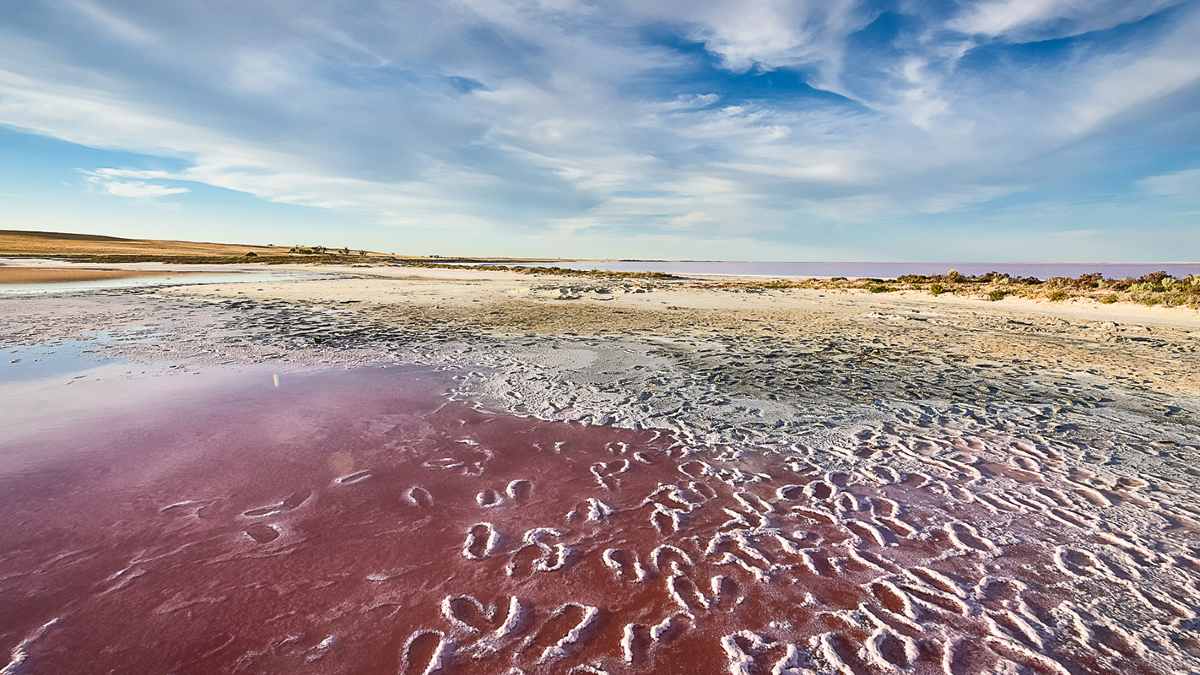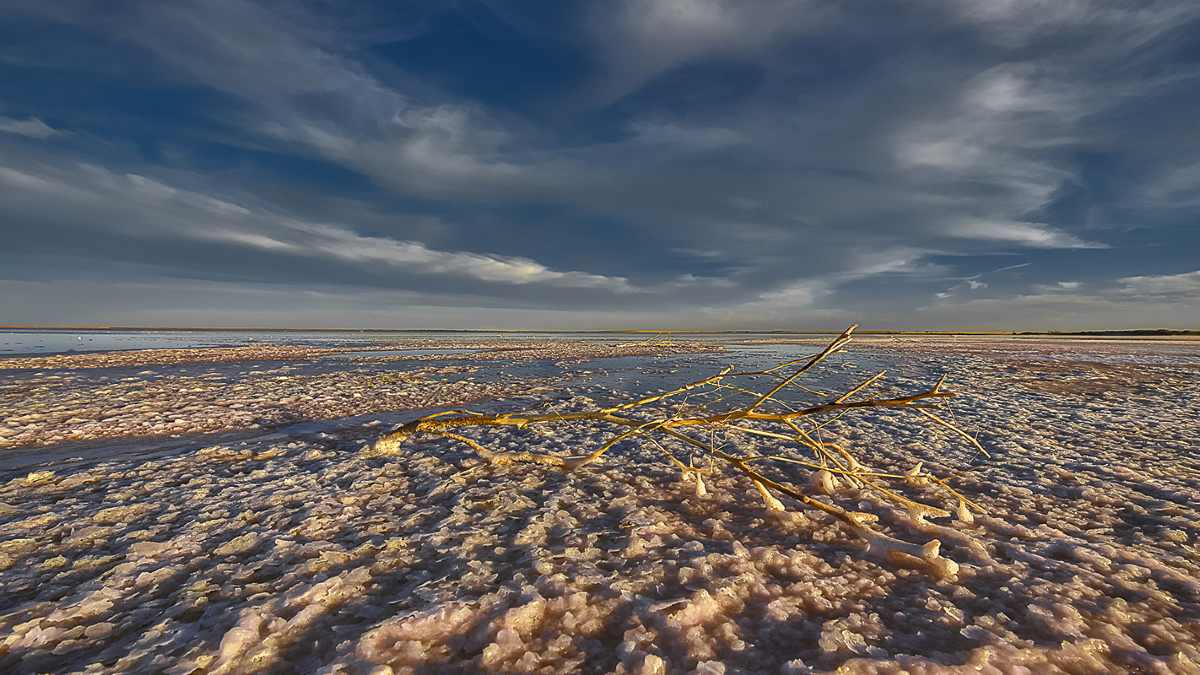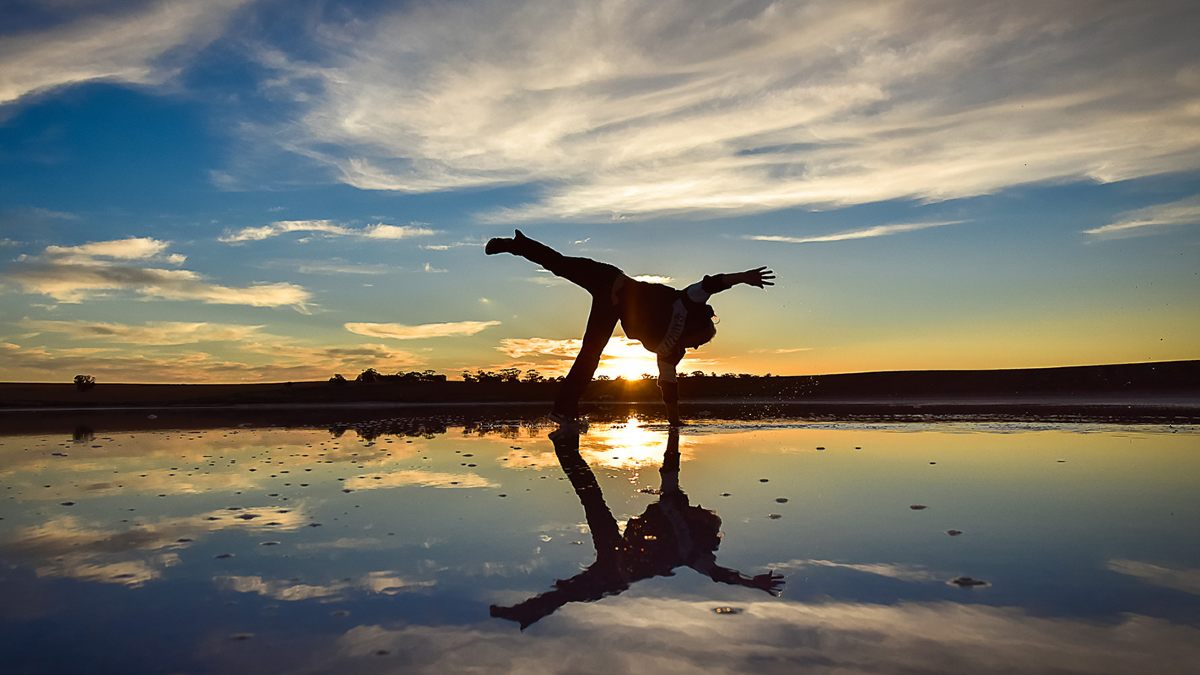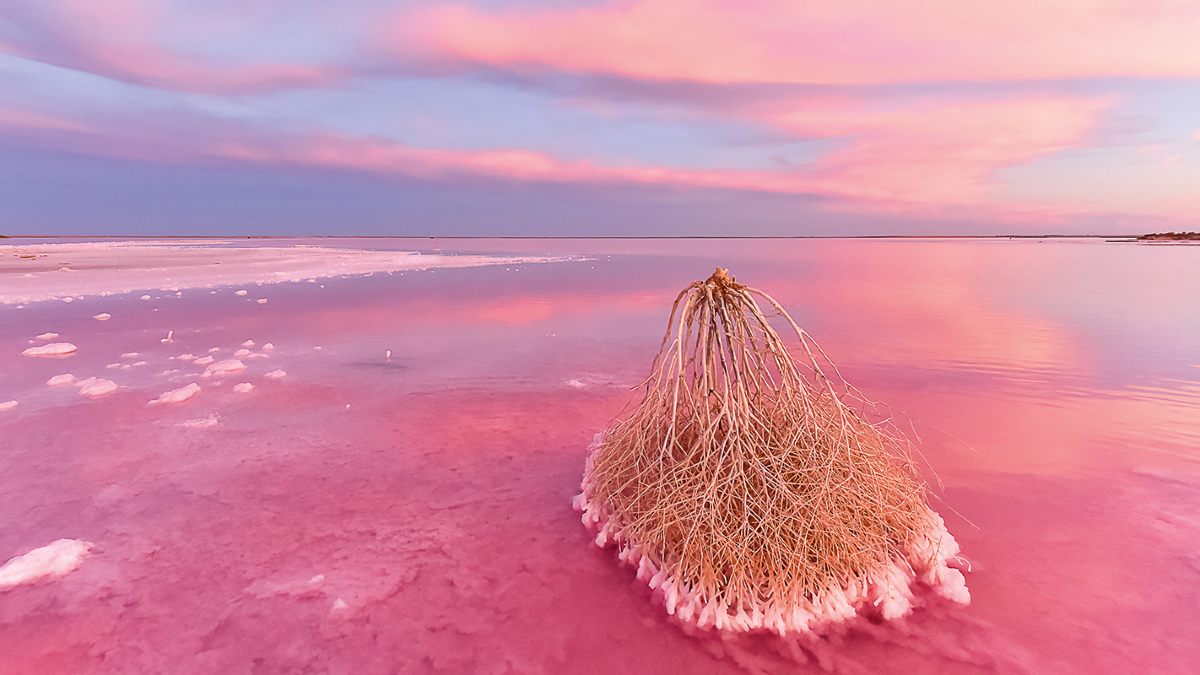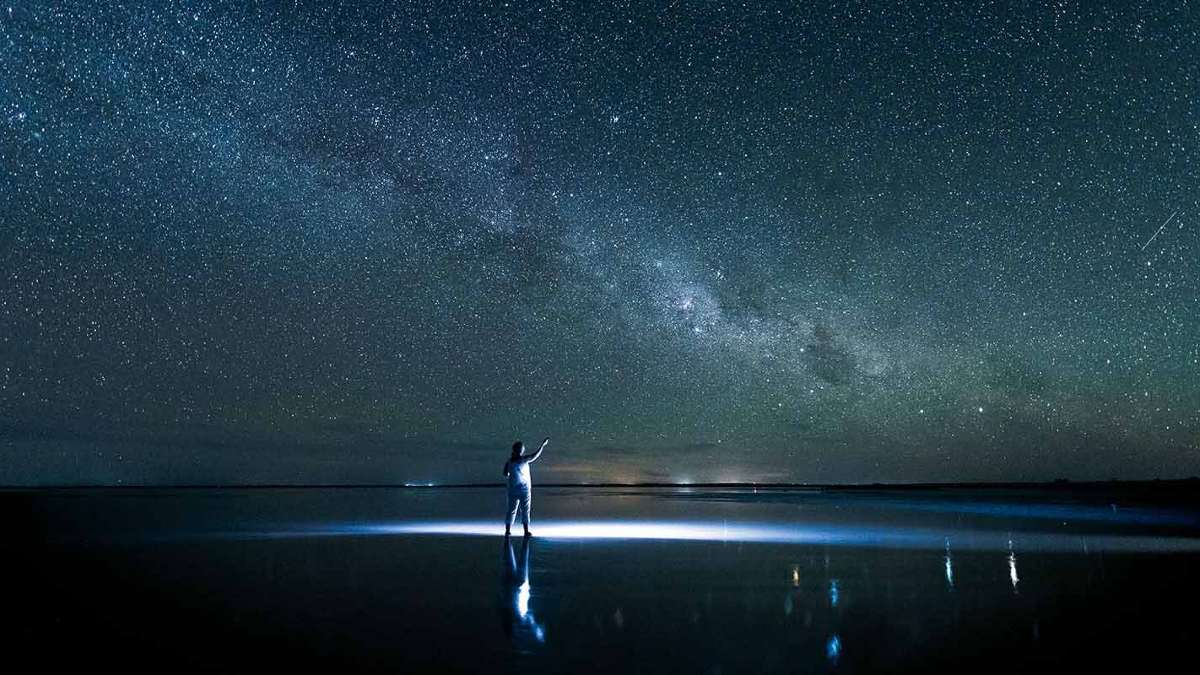Whether you’re seeking respite in nature, activities in the great outdoors or to tick off one of Victoria’s most iconic landscapes, Wilsons Promontory is a must-see destination. Use this handy guide to discover how to make the most of your time at the Prom.
Lake Tyrrell: Victoria’s mirror to the sky

Photographer Anne Morley takes us through her 12-hour shoot at photo-worthy Lake Tyrrell, and Jeremy Bourke explains the international appeal of Victoria’s mirror lake.
7.32pm
This moonscape shot reminded me of those famous photos of Armstrong’s footsteps on the moon. The setting sun is quite low and highlights the shapes in the salt. Beyond is this horrible black, sticky mud. I sank into it halfway up my shins, it’s frightful stuff. There were quite a few thongs and gumboots around that had been abandoned to the goo.
7.40pm
I was worried the clouds were going to blow in and kill the sunset but in the end they enhanced it. Cloud can make sunsets better but you need the right cloud in the right place. This shot shows up the salt crystals and how glossy and hard they are.
8.06pm
Photographers call the hour before sunset the ‘golden hour’. It’s when the light softens and colours are richer. My guide’s daughter posed so we could get the classic reflection pic that draws so many tourists here.
8.27pm
Every photographer knows when you’re shooting a sunset you’ve got to look for the play of light over your shoulder. I turned around to find this salt-encrusted tumbleweed and the cloud and lake getting pinker and pinker. It was so beautiful I didn’t know where to point my camera next.
1.29am
This is me and the Milky Way, in the middle of the night. I’m holding a torch in front of me for definition and another shining out into nothing, with the camera on a tripod behind set to go off once a minute. It felt a bit eerie, out there on my own in the pitch black, the only sound and movement was from harvesters working through the night on the farms beyond the lake. The stars were amazing, almost too many stars.
7.33am
Sunrise the next morning. I took turns with this photographer to capture the reflections of these old fence posts. Our brain tells us the pink is sky and the blue is water, so it looks like they’re floating into the sky. The salt crystallises on anything left in the water, including my feet and legs after a couple of hours. It literally grows on you.

Photo: Anne Morley
Where saltwater meets the sky
Photographers, star-gazers and, increasingly, busloads of Chinese tourists have been making tracks to Lake Tyrrell, an otherwise little-known salt lake just outside Sea Lake, 75 kilometres west of Swan Hill and 420 kilometres north-west of Melbourne.
But they’re rather late to the party. The local Boorong people have been marvelling at the night sky and its reflective effects on the lake for so long, they’re acknowledged as our planet’s first astronomers.
The constellation western scientists named Lyra is known to the Boorong as Neilloan, because this outline of a malleefowl matches its breeding season. The Boorong see Bunya the possum within the Southern Cross, while the dark Coalsack Nebula is, to them, Tchingal, a giant emu.
The word Tyrrell is from the Indigenous Tyrille, indicating ‘sky’, but its unique appeal comes from the effect it has on the land. The lake is often dry and, depending on the season and time of day, its salt-encrusted surface can be anything from bright pink to lilac. This is because the salt contains a bacterium with a red pigment that helps the organism harvest light for energy.
The saltiness points to a geological history when the sea level was much higher, and after the ocean retreated the lake may have been formed by sand drifts blocking Tyrrell Creek.
At 20,000 hectares, Tyrrell is Victoria’s largest salt lake, and although the Calder Highway from Melbourne passes just to the west, most travellers have been oblivious to it and its amazing characteristics.
But a few years ago professional photographers discovered it, and when images were re-posted on Chinese social media – Instagram went wild with it – inquiries began coming from China where oft-polluted skies can preclude star-gazing.

Photo: Anne Morley
Local tourism operator Ross Williams says 90 per cent of his guests are Chinese, and they’re just as entranced by daytime reflections, even with as little as 50 centimetres of water in the lake.
“On a hot day it can be like a mirror,” Ross says, but it’s got to be still. “As soon as the lake gets choppy, it loses a lot of its appeal.
He says the best viewing is in November. “Pinks on the lake are at an all-time high and there’s great galaxy viewing. You can stay out here all night.”
You almost have to on tours run by his partner Julie Pringle. They usually go out at 1am, while sunrise and sunset are also rewarding.
Sea Lake wasn’t prepared for its instant fame, and early visitors wanted for accommodation and even somewhere for lunch. Infrastructure is now improving, and proper visitor facilities, including a boardwalk, walking tracks and a viewing platform, are set to be built at Lake Tyrrell, starting later this year.
